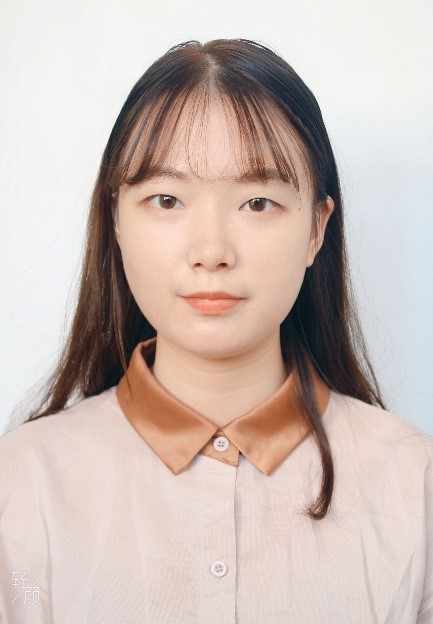Prof. Dawei Ding’s Team Publishes a Research Paper about Boosting the Photodynamic Immunotherapy of Cancers via Hypoxia Relief on Journal of Controlled Release
Photodynamic therapy (PDT) which usually generates reactive oxygen species (ROS) by the reactions of photosensitizers (PSs) and oxygen under light irradiation, serves as a powerful trigger of tumor immunogenic cell death (ICD) to initiate antitumor immunities in addition to the direct reduction of tumor burden via the oxidative stress. Nevertheless, tumor hypoxia impairs the ROS generation and ICD induction of PDT, thus impeding its efficacy and the subsequent immunotherapy. In addition, hypoxia plays a critical role in forming immunosuppressive tumor microenvironments (TME) by regulating the infiltration of immunosuppressive tumor-associated macrophages (TAMs) and the expression of programmed death ligand 1 (PD-L1). To simultaneously tackle these issues, Prof. Ding’s team in the College of Pharmaceutical Sciences, Soochow University recently designed a MnO2-containing albumin nanoplatform for the co-delivery of IR780, NLG919, and a paclitaxel (PTX) dimer (named as BMIP2N NPs) to boost photodynamic immunotherapy (Figure 1). The MnO2-catalyzed oxygen supply bolsters the efficacy of PDT and PTX-mediated chemotherapy, collectively amplifying the induction of ICD and the expansion of tumor-specific cytotoxic T lymphocytes (CTLs). More importantly, alleviating hypoxia reshapes the immunosuppressive TME via down-regulating the intratumoral infiltration of M2-type TAMs and the PD-L1 expression of tumor cells to enhance the infiltration and efficacy of CTLs in combination with immune checkpoint inhibitor NLG919, consequently eradicating primary tumors and almost completely preventing tumor relapse and metastasis. This study sets an example of enhanced immunotherapy for breast cancers through dual ICD induction and simultaneous immunosuppression modulation via both hypoxia relief and ICB, providing a strategy for the treatment of other hypoxic and immunosuppressive cancers. Based on this research, a research paper entitled “Enhancing photodynamic immunotherapy by reprograming the immunosuppressive tumor microenvironment with hypoxia relief” is published on Journal of Controlled Release (Impact factor: 10.8).

Figure 1. Schematic illustrations showing the fabrication of BMIP2N NPs (a) and their antitumor mechanisms (b). Created with BioRender.com.
Reference:
Mengying He, Mengyao Zhang, Tao Xu, Shujuan Xue, Dazhao Li, Yanan Zhao, Feng Zhi*, Dawei Ding*, Enhancing photodynamic immunotherapy by reprograming the immunosuppressive tumor microenvironment with hypoxia relief. Journal of Controlled Release 368 (2024) 233-250. https://doi.org/10.1016/j.jconrel.2024.02.030.
Author information
1. The corresponding author:

Dr. Dawei Ding is a Professor in the College of Pharmaceutical Sciences, Soochow University as the supervisor of PhD and master degree students. His team focuses on the application of biocompatible materials including proteins and fatty acids in drug delivery systems for the co-delivery of multiple drugs aiming for synergistic tumor treatment. Particularly, chemotherapy and phototherapy are utilized to provoke the host immune responses against tumors via immunogenic cell death (ICD), while the immune checkpoint inhibitors and immunoadjuvants enhance the efficacy of immunity aroused by ICD. In addition, they also devote to the study of microneedles and microfluidics for the development of carrier-free nanodrugs, nanoemulsions and microparticles in drug delivery applications. Ding’s team has published more than 20 papers in the related fields, some of which were presented on top journals such as Advanced Materials, ACS Nano, Chemical Engineering Journal, Biomaterials, Journal of Controlled Release and Advanced Healthcare Materials with fist/co-first and corresponding authors. Dr. Ding has also written a chapter in a book published by Elsevier. Moreover, he has also named several patents approved in Chine, USA, Japan and the Europe, and achieved a few prizes such as China Patent Excellence Award (2020) and the Prize of Taizhou Science and Technology Progress (First class, 2015). He is also the invited reviewer of several distinguished journals including Advanced Functional Materials, Journal of Materials Chemistry B, International Journal of Pharmaceutics, Pharmaceutics, Biosensors, Polymers etc.
2. The first author

Ms. Mengying He obtained her Master degree student from the College of Pharmaceutical Sciences, Soochow University in 2023 under the supervision of Prof. Dawei Ding. Her research interest focuses on synergistic tumor treatment. She has published 6 papers on the top journals including Chemical Engineering Journal, Biomaterials, Journal of Controlled Release and Advanced Healthcare Materials, with 5 of them as the fist/co-first author.